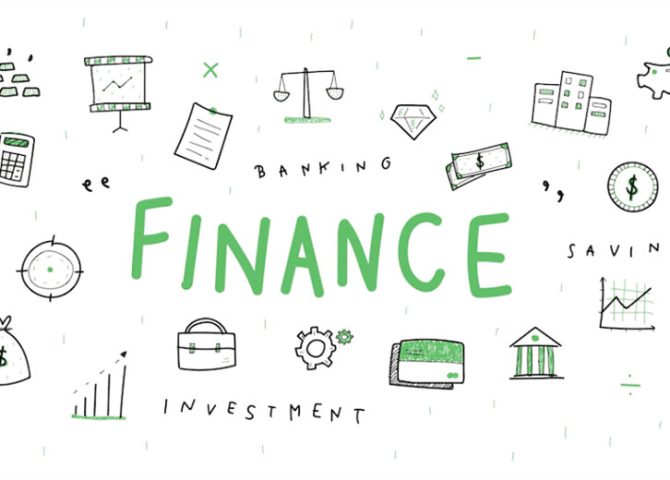
- 257 Views
- Carding Magazine
Discover How to Save for your Child’s Education
Saving for your child’s education seems as far off as saving for retirement if you have young kids. If your kids are older, you may think it’s too late.
Here’s the secret.
It’s never too early or too late to save for your child’s education. The best time to save or invest is now – no matter your child’s age.
But how do you save? Is a savings account enough? Should you invest aggressively? What will have the best outcome?
These are the questions we hear often, and we answer below.
Prepare your Finances First
Before you save for your child’s education, get your finances under control. Ask yourself:
- Do you have a lot of high-interest consumer debt? If so, pay it off. There’s no point in saving for your child’s education if you’re paying high-interest rates on other debts. Use the money to get out of debt first, then focus on saving.
- Do you have an emergency fund? Ideally, you should have 3 to 6 months of expenses saved. Look at your lifestyle and potential emergencies, though. Do you need more? Don’t be afraid to save up to 12 months of expenses for emergencies.
- Do you have a budget? Everyone needs a budget and it should include a line item for saving for your child’s education. How much can you save each month? Even if it’s a small amount, consistent contributions are the key.
- Have you saved for retirement? Although important to save for your child’s education, you have to take care of yourself too. Make sure you’re contributing to your retirement regularly so you reach your financial goals and those you have for your child.
Determine your Timeline
Once you’ve prepared yourself and are ready to save for your child’s education, look at your timeline.
This determines how and where you invest.
If your child is 2-years old, for example, you have at least 16 years before you’ll pay for university. That’s a long timeline that allows for more aggressive portfolios. But, if your child is 12-years old, you have only 6 years, and will need a more conservative portfolio.
Use your timeline to gauge how and where you invest.
Determine your Risk Tolerance
Now, focus on your risk tolerance. This is a personal decision. Think about how you could handle losing 10 per cent or more of your portfolio. Would it destroy your child’s chances of attending university or could you bounce back and supplement in other areas?
The higher your risk tolerance, the more aggressive you can invest.
What Should you Save for your Child’s Education?
If you’ve gone over your budget and can’t spare but a little amount of money, what else can you do? You want only the best for your children, but looking at your budget, you don’t know how you’ll send them to university.
Here are a few other areas to look at besides your regular income:
- Tax refunds – Any refunds you receive, put toward your child’s education. We’re all programmed to put the money in our spend account and buy something nice. What if instead, you invested in your child’s educational future? A decent windfall each year into the account could cover a decent amount of tuition.
- Inheritance – If you receive an inheritance, bank at least some of it for your child’s education. You don’t have to invest the entire amount in the university fund, but consider investing a portion.
- Higher-income – Do you receive an annual raise? What if instead of letting your lifestyle creep up you invest the difference each month in your university funds? Even that small steady amount can add up because you give the money time to grow, nothing compares to compounded earnings when saving for your child’s education.
These (or any other funds) you add to regular contributions, no matter how small, will help you achieve your savings goals.
Where Should you Save for Education Expenses?
Once you know where you’re getting the money from, it’s time to figure out where to save for education expenses.
It’s tempting to put the funds in a savings account because it’s safe. You don’t have to worry about loss, but you also won’t have very large financial gains. You’ll have to work a lot harder to have the money needed to fund your child’s education if you rely on savings accounts alone.
If you want to keep some of the money in a savings account for peace of mind, that’s fine. But investing at least some of it based on your risk tolerance is the key to growing your child’s education account as much as possible.
A few key areas to consider include:
- Offshore investing – Take advantage of the tax benefits, and shelter offshore investments offer. You may even find larger gains offshores because of the incentives certain countries offer to bring in wealth from other countries. Use it to grow your child’s educational expense account.
- Stock market – It’s risky, but the rewards are often worth it. If you diversify your portfolio well enough, you can offset the risk of the stock portion of your portfolio. Stock gains can be a great way to give your account the boost it needs to pay for university.
- Bond market – Bond investments offset the stock risks. A well-diversified portfolio invests in both to offset the risks while realizing the possible gains.
- Real estate – investing in real estate provides monthly cash flow and capital gains. Whether you fix and flip or buy and hold, there are many potential gains. If you reinvest the monthly cash flow in offshore investments, stocks, or bonds, you make your money work even harder for you.
Be Consistent When Saving for your Child’s Education Expenses
The key is consistency. Even if you feel like you can’t save enough, save what you can. It adds up and every dollar you invest today is worth more tomorrow.
It’s never too early or too late to save for your child’s education expenses. Even if you aren’t sure if your child will attend university, having the money ready is important. If he/she doesn’t attend university, you may want to help him/her in other ways. Maybe you help with housing expenses or getting him/her started in her trade or career.
If you don’t use the funds for educational expenses, you can keep them for your retirement. Find the perfect balance, saving for your future and your child’s – your future self will thank you.








Leave a Comment